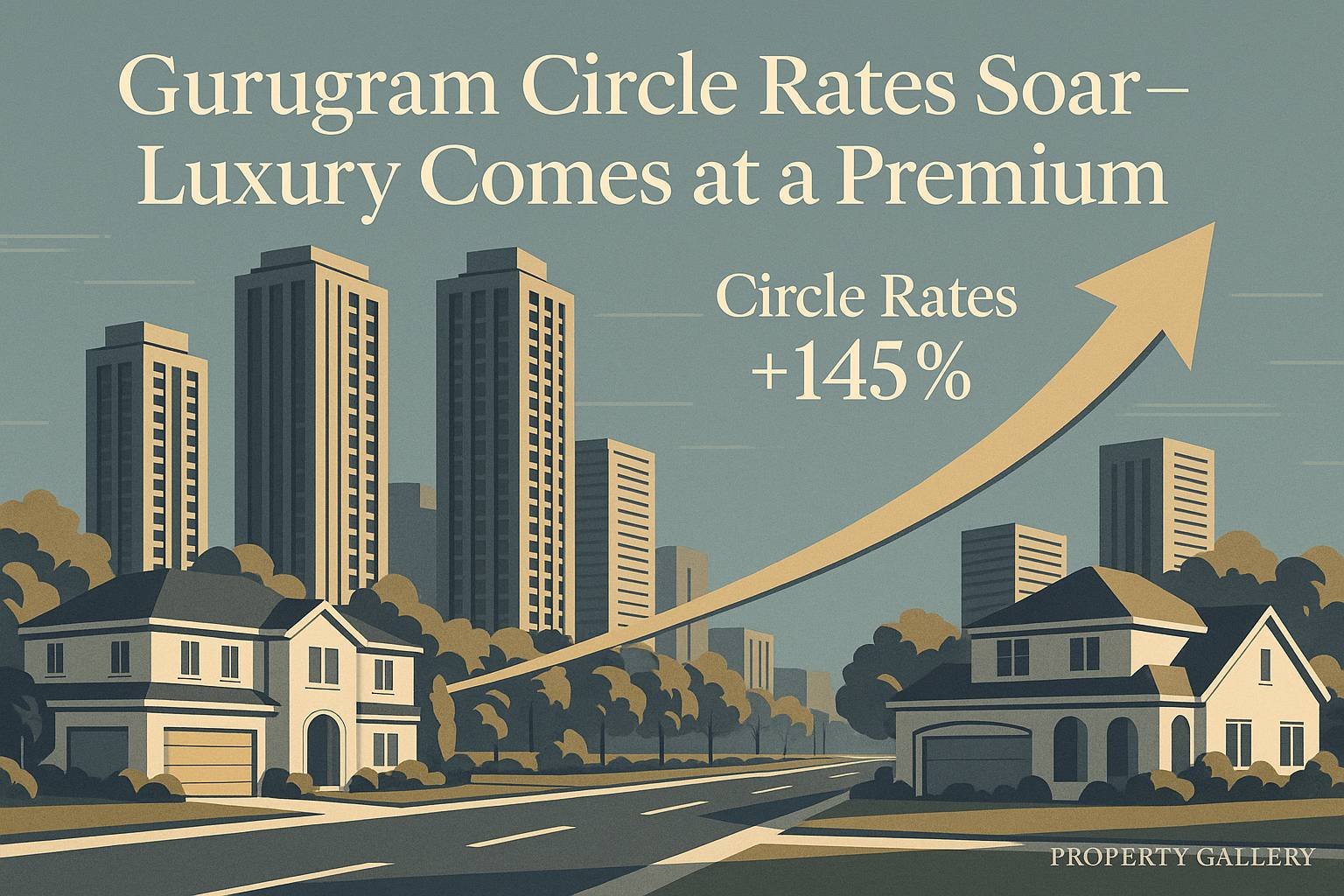Gurugram may soon see a seismic shift in real estate cost structures. The district administration has proposed a bold increase in circle rates the government-determined minimum valuation for property transactions ranging from 8–77% for residential zones and as high as 145% for agricultural land in some areas. This move, aimed at aligning official values with market realities, could reshape the real estate landscape for both buyers and investors.
1. What’s Changing and Why?
Circle rates directly impact stamp duty and registration charges. Starting from December 2024, a previous round of hikes (10–30%) had already raised transaction costs substantially, especially in premium zones like Golf Course Road and Dwarka Expressway. Now, the proposed hike goes further aimed particularly at emerging residential sectors and villages too.
These updates are driven by two objectives:
Closer alignment to market prices, reducing the gap between formal rates and actual transaction value
Boosting tax revenue, especially in high-value areas where market prices significantly outstrip circle rates.
2. How Circle Rate Hikes Affect Property Costs
Here’s what buyers and sellers should consider:
Stamp Duty & Registration Fees: With increased circle rates, these costs will rise even if actual sale prices remain unchanged.
Bank Financing & Loan Limits: Loans are often tied to circle values; higher assessments may increase EMIs or home loan portions.
Capital Gains Exposure: Sellers may pay higher taxes, as gains are calculated on the higher of circle rate or actual sale price.
While market prices may already exceed circle rates, regulatory enforcement can no longer ignore discrepancies.
3. Which Areas Are Under Strong Focus?
Upscale corridors, including Golf Course Road Phases I–V, South City, Suncity, and Sushant Lok, may see hikes close to 77%
Emerging sectors and villages such as new Dwarka Expressway zones and agriculturally zoned plots may face up to 145% increases if final approvals go through.
Mid-tier residential sectors could expect more moderate increases of 10–20%, still impacting registration fees and transaction viability.
4. What Smart Buyers & Investors Should Do
Verify circle rates vs. actual sale rates for the sector this helps evaluate negotiation leverage.
Review total transaction cost factoring registration, tax, and potential home loan recalculations.
Consider adjacent emerging micro-markets where hikes aren’t as steep but infrastructure is upcoming.
Submit formal objections if local hikes feel unjust draft proposals allow feedback windows before enforcement.
Negotiate bulk residential corpus or pre-launch deals before implementation if you’re an early mover.
5. Impact Summary & Outlook
Luxury and prime addresses may see a recalibration rather than crash but affordability pressure rises.
Mid-market housing segments may be partly protected but face increased compliance costs.
Circle rate hikes sharpen investment strategy: buy early in undervalued emerging sectors or lock deals in existing sectors before revisions take effect.
Final Take
Gurugram’s real estate fiscal landscape is undergoing a major reset. The proposed circle rate hike up to 145% in select zones is not merely a bureaucratic change it reshapes affordability, entry thresholds, and investment dynamics.
For homebuyers, investors, and developers alike, action before impact is key. At Property Gallery, we help you track sector-specific rate implications, budget real post-hike costs, and align your property strategy accordingly.
